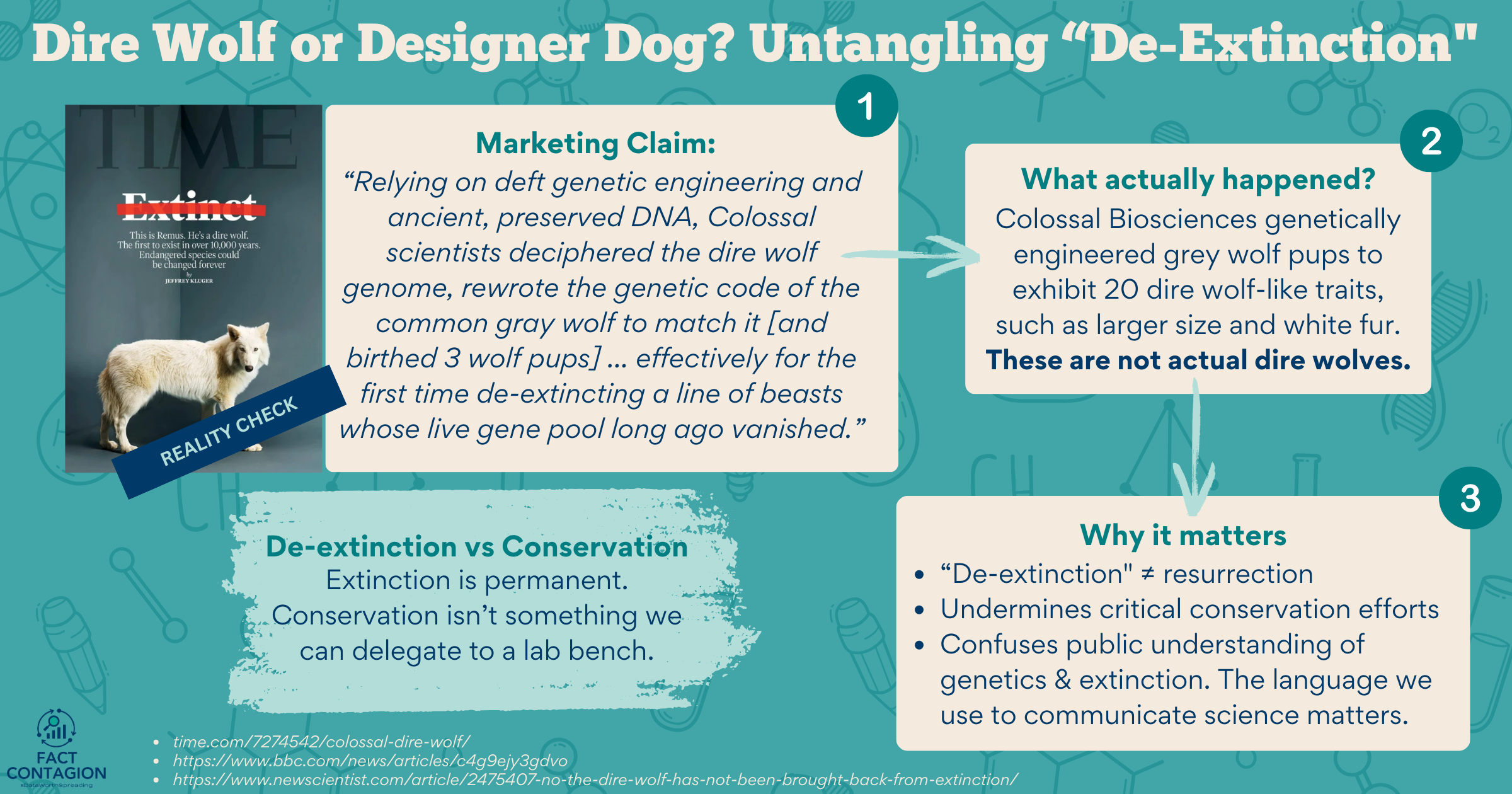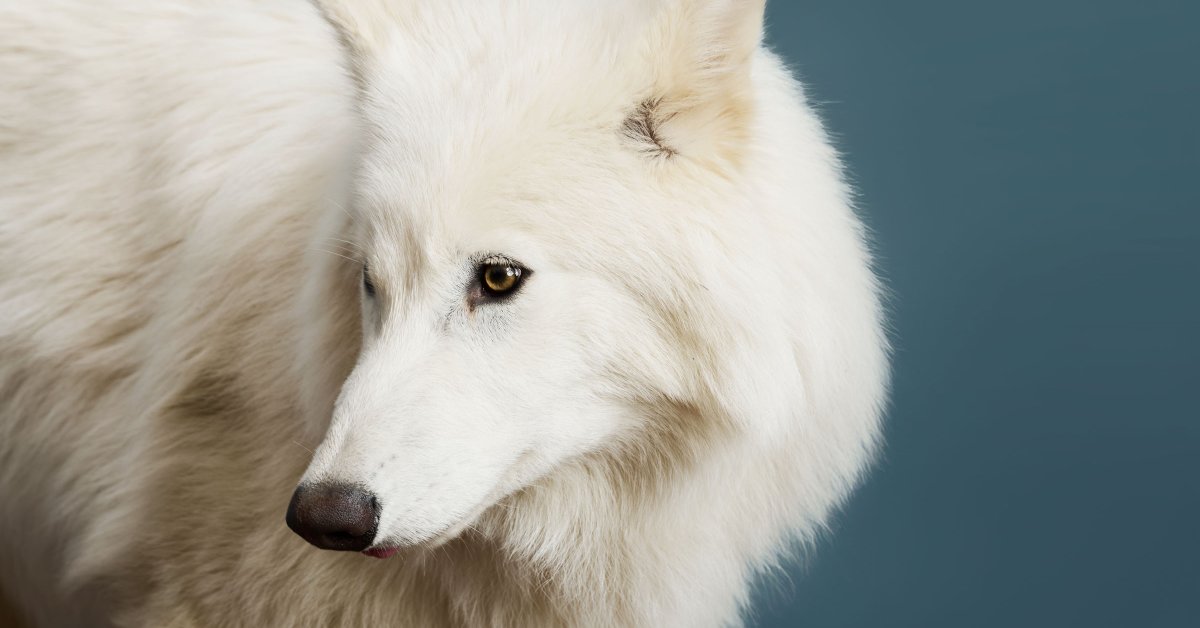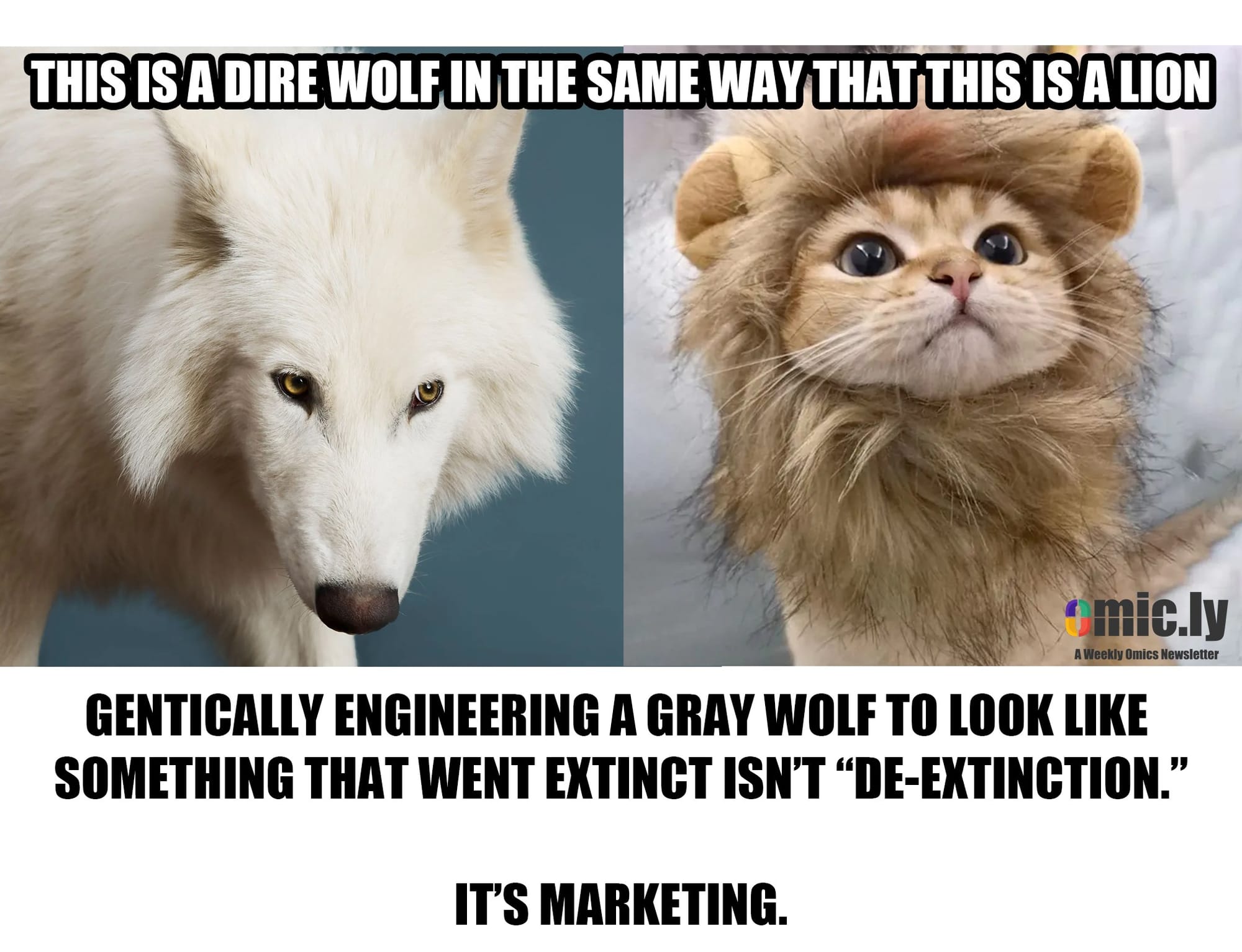"De-Extinction" or Designer Dog?

Headlines this week are claiming dire wolves are back. Thanks to the majestic, snow-white wolf on the cover of Time Magazine yesterday, with the headline implying the de-extinction of the dire wolf. "Endangered species could be changed forever." 👀 Full article, titled "The Return of the Dire Wolf", here:

Directly quoting a passage:
"Relying on deft genetic engineering and ancient, preserved DNA, Colossal scientists deciphered the dire wolf genome, rewrote the genetic code of the common gray wolf to match it, and, using domestic dogs as surrogate mothers, brought Romulus, Remus, and their sister, 2-month-old Khaleesi, into the world during three separate births last fall and this winter—effectively for the first time de-extincting a line of beasts whose live gene pool long ago vanished."

But don't be fooled.
This isn't Jurassic Park.
Essentially, Colossal Biosciences genetically engineered grey wolf pups to exhibit 20 dire wolf-like traits, such as larger size and white fur. These are not actual dire wolves. Real dire wolves went extinct over 10,000 years ago, and their degraded DNA makes true resurrection impossible. While the tech is impressive, calling it "de-extinction" is incredibly misleading. Once a species is extinct, it's gone. No gene editing can reverse that reality.
A couple news outlets are getting it right:
BBC: "Experts dispute claim dire wolf brought back from extinction" (https://www.bbc.com/news/articles/c4g9ejy3gdvo)
New Scientist: "No, the dire wolf has not been brought back from extinction" (https://www.newscientist.com/article/2475407-no-the-dire-wolf-has-not-been-brought-back-from-extinction/)
Experts argue that the ancient DNA used by Colossal scientists is too fragmented for accurate cloning, and the resulting animals lack the complete genetic makeup and ecological behaviors of the extinct species.
Implications for Endangered Species
Colossal also claims that their technology used "to summon back species from the dead" could help prevent endangered animals from "slipping into extinction" themselves (e.g., engineering elephants to better withstand climate change). In addition to ethical questions, Colossal's hypothetical implications could negatively affect traditional conservation efforts if there is an ill-informed (i.e., false) sense of security that our threatened animals can be saved in a laboratory.
Bottom Line?
Genetic engineering is a powerful and often misunderstood tool (see: genetically modified organisms (GMOs) in our food supply). It's a lot of things (such as innovative, controversial, and ethically complex), but one thing it's not is a time machine. Dressing up genetically modified animals with a few ancient traits doesn’t undo extinction. It rebrands it. To be quite cynical, this is a marketing ploy by Colossal Biosciences.

This story is a prime example of how the language we use to communicate science matters, especially when it risks distorting the public's understanding.
If we begin to believe that extinct species can simply be recreated or that technology alone can solve biodiversity loss, we risk losing sight of what truly matters: protecting the ecosystems and species still with us. Extinction is permanent. Conservation isn’t something we can delegate to a lab bench.


